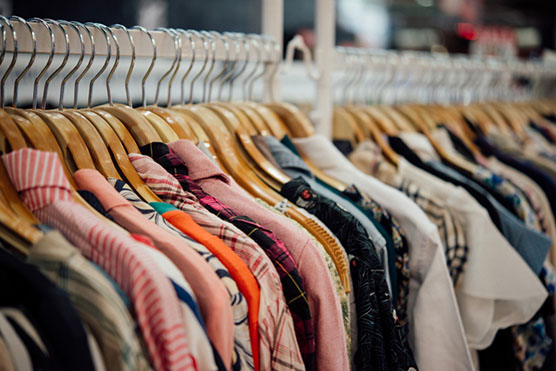
In today’s fashion-forward world, clothing brands play a pivotal role in defining style, identity, and even societal trends. This article delves deep into the landscape of clothing brands, examining notable players, emerging trends, and the intricate fabric of the fashion industry.
Table of Contents
The Evolution of Clothing Brands
Clothing brands have come a long way from their humble beginnings. Initially, garments were produced locally, often reflecting cultural and geographical uniqueness. However, with the advent of the industrial revolution, the rise of mass production transformed the clothing industry. Today, we see a myriad of brands, from luxury high-fashion labels to affordable fast-fashion retailers.
Iconic Luxury Brands
Luxury clothing brands epitomize elegance, exclusivity, and craftsmanship. Notable names such as Chanel, Gucci, and Prada have carved their niches in the fashion world. Chanel, founded by the legendary Coco Chanel, revolutionized women’s fashion with its timeless designs, including the iconic Chanel No. 5 fragrance and the classic Chanel suit. Gucci is synonymous with opulence, characterized by its bold designs and signature motifs. The brand has successfully embraced modern aesthetics while maintaining its rich heritage. Prada is renowned for its innovative approach, often blending art and fashion. The brand’s unique designs often challenge traditional norms, making it a favorite among fashion connoisseurs.
Fast Fashion Phenomenon
In contrast to luxury brands, fast fashion has gained immense popularity over the past few decades. Brands like Zara, H&M, and Forever 21 epitomize this trend, offering trendy clothing at affordable prices. Zara is a prime example of how fast fashion operates. With its ability to quickly adapt to the latest trends, Zara releases new collections bi-weekly, ensuring customers have access to the latest styles without breaking the bank. H&M champions sustainable practices while delivering trendy apparel. The brand’s commitment to eco-friendly fashion is reflected in its Conscious Collection, which focuses on using sustainable materials. Forever 21 has captured the youth market with its vibrant and affordable clothing. However, its business model has faced scrutiny over sustainability, highlighting the need for balance in the fast fashion industry.
Emerging Sustainable Brands
As consumers become increasingly conscious of their impact on the environment, sustainable clothing brands are gaining traction. These brands prioritize ethical production methods, sustainable materials, and fair labor practices. Patagonia stands out in the sustainable fashion movement. The brand’s commitment to environmental activism is reflected in its high-quality outdoor apparel and transparency about its production processes. By using recycled materials and promoting fair labor practices, Patagonia sets a standard for other brands to follow.
Everlane has gained popularity through its ethos of radical transparency. The brand openly shares its cost structure, allowing customers to understand the true value of their products. This approach builds trust and encourages ethical consumerism. Reformation combines style with sustainability. The brand creates fashionable clothing while emphasizing eco-friendly practices. With a focus on minimizing waste and utilizing sustainable materials, Reformation appeals to environmentally conscious consumers without sacrificing style.
The Influence of Streetwear
The rise of streetwear has reshaped the fashion landscape, merging casual attire with high fashion. Brands like Supreme, Off-White, and BAPE have become cultural phenomena, influencing not just clothing choices but also lifestyle and identity. Supreme has revolutionized the fashion industry through its limited drops and collaborations. The brand’s exclusive releases often sell out within minutes, creating a sense of urgency and desirability. Supreme’s collaborations with luxury brands like Louis Vuitton have solidified its status as a cultural icon.
Off-White, founded by designer Virgil Abloh, blurs the lines between high fashion and streetwear. Known for its distinctive designs and bold graphics, Off-White has garnered a loyal following, appealing to both streetwear enthusiasts and luxury fashion aficionados. A Bathing Ape (BAPE) is celebrated for its unique aesthetic, characterized by vibrant colors and signature camouflage patterns. The brand has become a staple in street fashion, often associated with hip-hop culture and youth movements.
The Role of Online Retail in Clothing Brands
The digital revolution has transformed the way consumers shop for clothing. Online retail has provided clothing brands with a platform to reach global audiences, offering convenience and accessibility. E-commerce platforms like ASOS, Amazon Fashion, and Zalando have reshaped the retail landscape. These platforms provide a vast array of clothing options, allowing consumers to discover new brands and styles with ease. Social media has become a powerful tool for clothing brands to engage with consumers. Platforms like Instagram and TikTok enable brands to showcase their collections, promote sales, and connect with influencers who can amplify their reach.
The Future of Clothing Brands
As we look toward the future, clothing brands must navigate evolving consumer preferences and industry challenges. Sustainability will likely continue to play a crucial role in shaping the landscape, as consumers increasingly demand transparency and ethical practices. The integration of technology in fashion is set to revolutionize the industry. Brands are exploring virtual reality fitting rooms, augmented reality shopping experiences, and AI-driven personalization to enhance customer experiences.
The globalization of fashion presents both opportunities and challenges. Brands can reach diverse markets but must also navigate cultural sensitivities and varying consumer preferences Afs2014.org/.
Conclusion
In the ever-evolving landscape of clothing brands, understanding the nuances between luxury, fast fashion, sustainable options, and emerging trends is crucial. By embracing innovation, ethical practices, and the power of digital platforms, clothing brands can not only survive but thrive in this competitive market.